It was the 11th century when gingerbread made its way to Europe. An early recipe had ingredients like ground almonds, stale breadcrumbs, rosewater, sugar and ginger. The mixture formed a paste that was pressed into wooden molds. The shapes were used like stories to show the news of the times and molds could be made into the shapes of royal figures, religious symbols and so on. They decorated the cookies with gold paint that could be eaten or with white icing for poorer people.
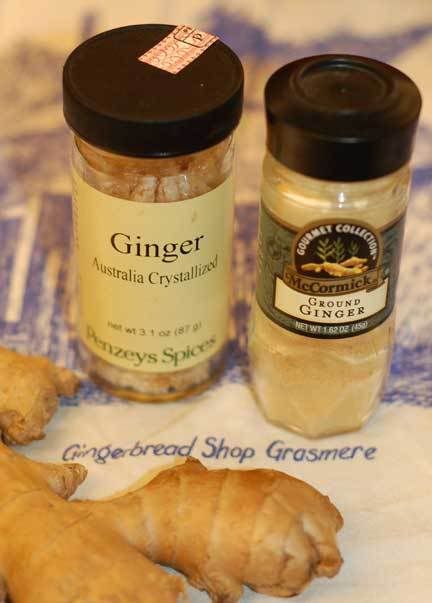
Queen Elizabeth I brought the gingerbread man to popularity in the 16th century when she presented dignitaries with cookies made in their own images. The recipe evolved as well, replacing breadcrumbs with flour and adding eggs and other sweet things. People began tying ribbon on them and handing them out at fairs. They also exchanged gingerbread cookies as a showing of love for one another.
In 1875 the gingerbread man made his debut in print in St. Nicholas Magazine. There are now several variations of that story. This is the version I learned as a little girl in the late 1950s.
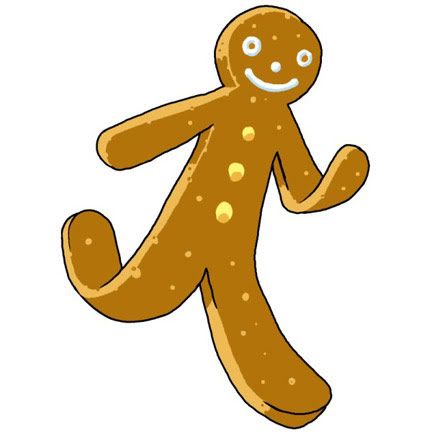
| The Gingerbread Man Once upon a time, there were a little old woman and a little old man who lived in a little cottage near the river. The little old woman and the little old man were hungry, so the little old woman decided to bake a gingerbread man. She made a big batch of gingerbread dough, then rolled it flat and cut it in the shape of a gingerbread man . She gave him raisins for eyes , a cinnamon drop for a mouth , and more raisins for buttons. Then she put the gingerbread man in the oven to bake. When the gingerbread man was done, the little old woman opened the oven door, but before she could take him out, the gingerbread man jumped up and ran through the kitchen and out of the cottage shouting, "Don't eat me!" The little old woman ran after the gingerbread man . "Stop," she yelled. But the gingerbread man ran even faster, chanting, "Run, run as fast as you can. You can't catch me, I'm the gingerbread man." The gingerbread man ran into the garden and passed the little old man. "Stop," the little old man called out, "I want to eat you." But the gingerbread man ran even faster, chanting, "I've run away from a little old woman , and I can run away from you, I can. Run, run as fast as you can. You can't catch me, I'm the gingerbread man." The little old man chased the gingerbread man, followed by the little old woman. But the gingerbread man ran too fast for them. The gingerbread man ran through the yard and passed a pig . "Stop," the pig snorted, "I want to eat you." But the gingerbread man ran even faster, chanting, "I've run from a little old woman and a little old man , and I can run away from you, I can. Run, run as fast as you can. You can't catch me, I'm the gingerbread man ." The pig chased the gingerbread man, followed by the little old woman and the little old man . But the gingerbread man ran too fast for them. The gingerbread man passed a cow by the barn. "Stop," the cow mooed, "I want to eat you." But the gingerbread man ran even faster, chanting, "I've run from a little old woman and a little old man and a pig , and I can run away from you, I can. Run, run as fast as you can. You can't catch me, I'm the gingerbread man." The cow chased the gingerbread man, followed by the pig, and the little old woman and the little old man. But the gingerbread man ran too fast for them. The gingerbread man passed a horse in the field. "Stop," the horse neighed, "I want to eat you." But the gingerbread man ran even faster, chanting, "I've run from a little old woman and a little old man and a pig and a cow, and I can run away from you, I can. Run, run as fast as you can. You can't catch me, I'm the gingerbread man ." The horse chased the gingerbread man, followed by the cow, the pig, and the little old woman and the little old man . But the gingerbread man ran too fast for them. Then the gingerbread man reached a wide river, but he didn't know how to swim. A sly and hungry fox saw the gingerbread man and said, "Jump on my tail, and I'll take you across the river!" The gingerbread man thought to himself, "I'll be safe on his tail." So he jumped on the fox's tail and they started across the river. Halfway across the river , the fox barked, "You're too heavy for my tail, jump on my back." So the gingerbread man jumped on the fox's back. Soon, the fox said, "You're too heavy for my back, jump onto my nose." So the gingerbread man jumped on the fox's nose. But as soon as they reached the riverbank, the fox flipped the gingerbread man into the air, snapped his mouth shut, and ate the gingerbread man. And that was the end of the gingerbread man. |
Gingerbread houses originated in Germany when the Brothers Grimm released a book of fairy tales that included Hansel and Gretel. In the story, the children were lured into a house made of gingerbread. As Germans came to America, they brought the tradition of making gingerbread houses with them and it spread throughout the country (and in Britain, as well). In some places, it became a tradition to make a gingerbread house for the Christmas season and then break it open and eat it for the new year.
My children have always made gingerbread houses for the holiday. As a matter of fact, we typically have a whole gingerbread scene with a large outdoor area including trees, snow covered ground and a pond of some kind. We enjoy the gingerbread theme so much that I put together a gingerbread centrepiece for the dining room table:
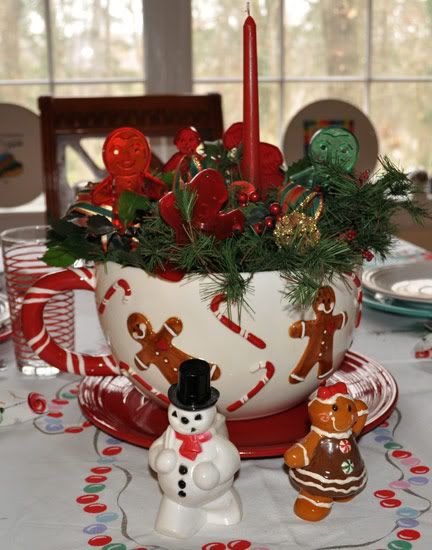
And a close-up of some of the vintage gingerbread man cutters:

There are recipes for gingerbread on both sides of my family tree and they are both the cake style. The first one comes from my Mom's maternal grandmother, from whom I got my middle name: Louise. Louise used to make gingerbread as an afternoon snack for all of us kids and she would serve it with custard sauce. She normally baked it in a square pan would cut it in squares to present it to us.
The second recipe comes down from a grandmother named Jean Bolton. Jean was my paternal great, great, great, great grandmother who came to this country from England. She lived from 1761-1794. According to my grandmother, this receipt was handed down by word of mouth until my great-grandmother's sister wrote it down in 1925. On the back of the recipe card where I copied the info from Mamah, I have a family tree chart tracing back to Jean Bolton, which shows I am the seventh known generation to be baking this gingerbread. And I have passed the recipe on to my daughters.
Both of these recipes are excellent! I tend to make whichever one for which I've got the ingredients handy. DD#2 is a senior this year. For teacher gifts she decided she wanted to bake. So we did a little brainstorming and decided to use some vintage house-shaped cake pans that belonged to my Mom and the Guy's Mom. (The little house pans were from the 1950s.) These gingerbread houses fit perfectly into the Longaberger Gingerbread Baskets. The Gingerbread Baskets were the special Christmas basket from 1990. We spent some time scouring eBay to collect the baskets. Last week we began baking gingerbread and delivering the gifts. But I couldn't post about them before now because some of her teachers read my blog and the last one gets hers today. Didn't want to spoil the surprise!
Now we couldn't bake gingerbread and not make any for us to eat. We enjoy the gingerbread sliced at room temperature, as well as toasted and spread with a little butter. And the toasted gingerbread is a great thing to have at breakfast.
We collected the ingredients:
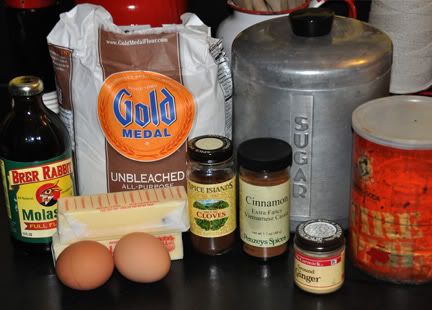
Here's one of the pans:
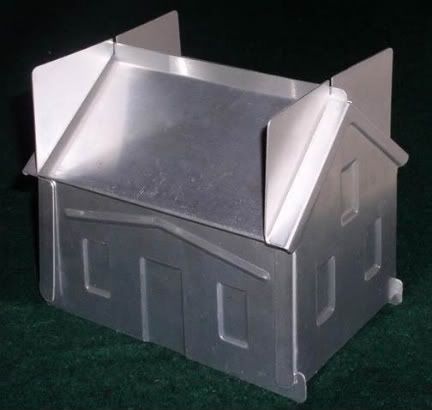
I spray them generously with baking spray!
Gingerbread houses turned out and cooling:
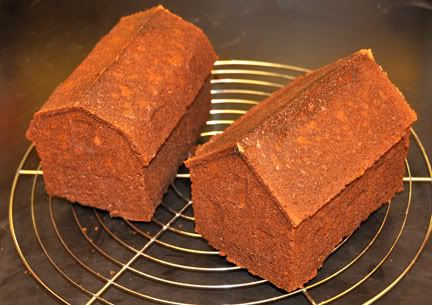
Placed in the baskets and wrapped in cellophane to be delivered to the recipients:
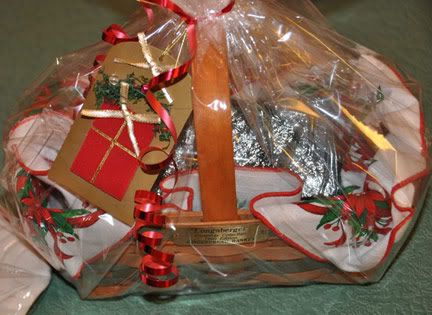
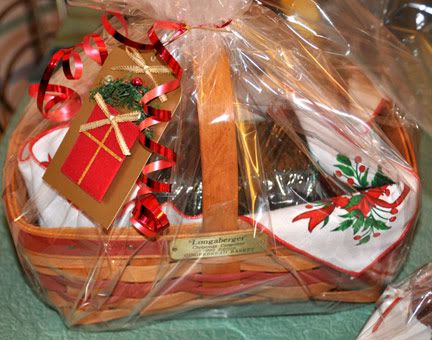
| Louise's Gingerbread 2 eggs 1 cup syrup 1 cup sugar 1/3 cup shortening 1 cup sour milk 2 teaspoons baking powder 3 cups flour 1 pinch salt 1 tablespoon ginger 1 teaspoon cinnamon Sift dry ingredients. Cream shortening and sugar; add eggs and syrup. Fold in dry ingredients. Add sour milk and blend well. Pour into greased and floured shallow pan. Bake at 350ºF for 30-45 minutes. Meanwhile, make custard sauce. Custard Sauce 1/3 cup flour 2/3 cup sugar ¼ teaspoon salt ¼ teaspoon nutmeg 2½ cups milk 2 egg yolks, lightly beaten 2 tablespoons butter 1 teaspoon vanilla Mix flour, sugar, salt and nutmeg. Gradually add milk. Cook in top of double boiler over moderate heat until mixture begins to thicken. Cook 2 minutes and remove from heat. Add a small amount of hot mixture to egg yolks, Stir yolks into remaining hot mixture. Cook 1 minute, stirring constantly. Remove from heat and stir in butter and vanilla. Serve over gingerbread while hot. Notes: Louise wrote the ingredients down in the order given with no directions for my grandmother, when Mimi was a young bride. In the 1920s, that was fairly common, as it was assumed that cooking techniques were just known. By the time my Mom was passing the recipe on to me, the directions got put down on paper. Most of the time when writing the recipe now, I follow the protocol of listing the ingredients in the order used. But for the history in this post, I left it the way Louise wrote it. |
| Mamah's Gingerbread 2½ cups sifted flour 1½ teaspoons soda 1 teaspoon cinnamon ½ teaspoon ginger ½ teaspoon cloves ½ teaspoon salt ½ cup sugar ½ cup mixed lard and butter 1 egg, beaten 1 cup molasses 1 cup hot water Sift dry ingredients. Cream shortening and sugar. Add egg and molasses, then dry ingredients. Add hot water last and beat till smooth. Bake in greased shallow pan 40-45 minutes at 350ºF. Makes 15 portions of good old fashioned gingerbread. Notes: 1. I have never made this with lard - just use 1/2 cup butter. 2. The recipe is easily doubled. 3. Mamah always insisted you must use Brer Rabbit brand molasses. I don't know when that got added to the recipe, because it certainly wasn't around when Jean Bolton was baking this. I'm guessing it may have come about when Mamah's aunt actually committed the recipe to paper in 1925. I have found that Grandma's Molasses works just as well. |
namasté,


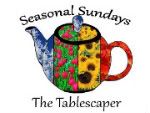

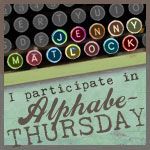
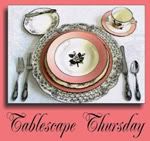

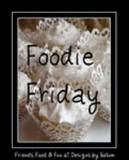






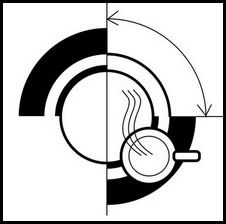

 Alabama Time
Alabama Time Paris Time
Paris Time Venice Time
Venice Time










2 comments:
This was such a fun and interesting post Becky. I love gingerbread and will give your recipes a try. Your table center piece using the cutters is adorable.
Carolyn
What a great post. I cannot believe these recipes. How wonderful to have these passed down to you. And then to make them gifts to others/ So wonderful!
Post a Comment